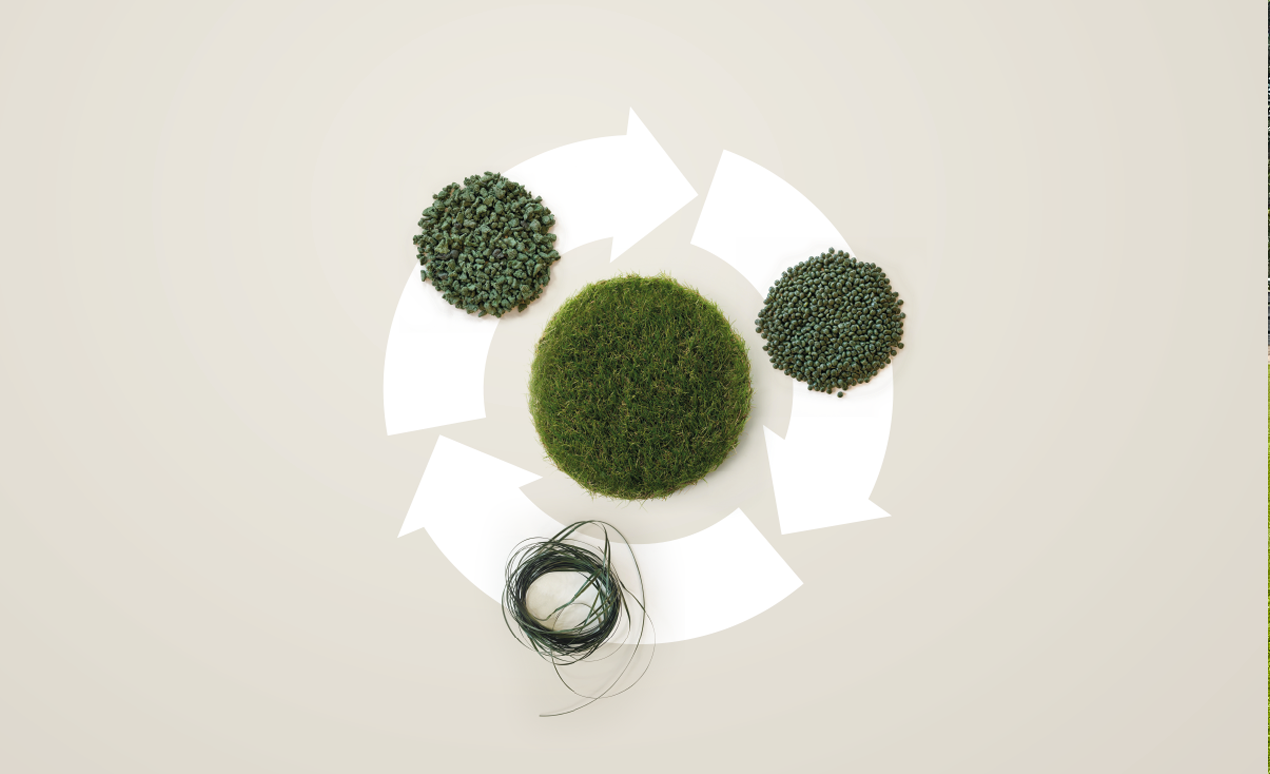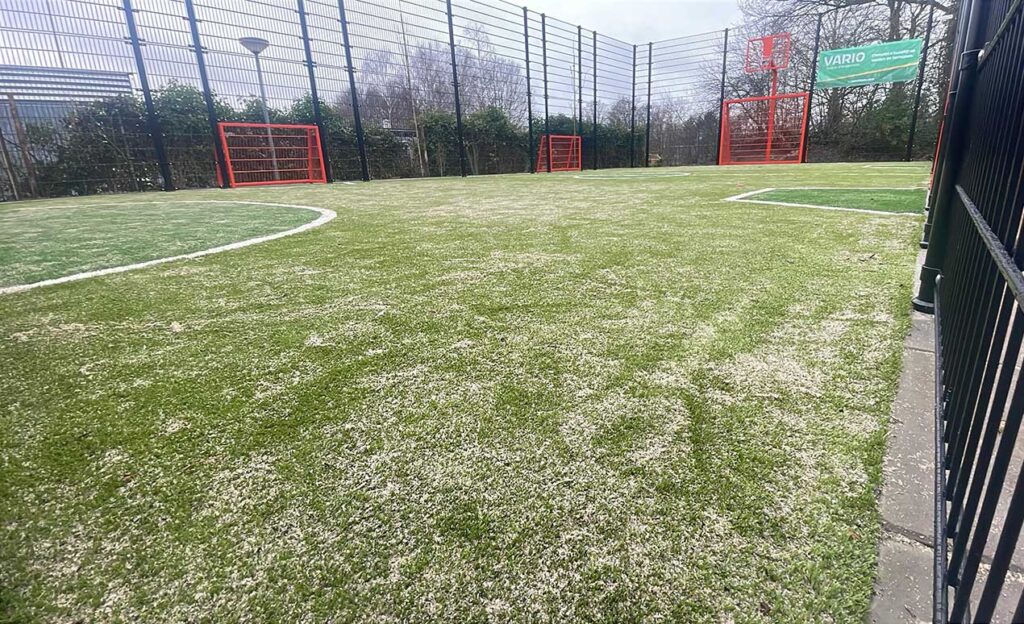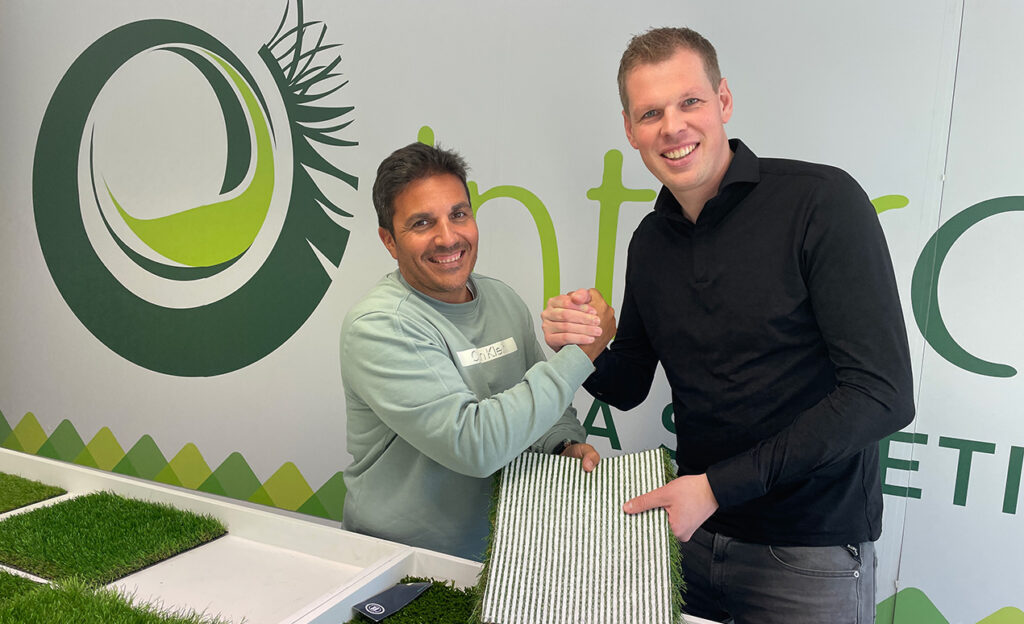In the quest for sustainability and environmentally friendly production processes, circular artificial grass is a concept that is increasingly coming to the fore. Moving towards a circular economy means using raw materials as efficiently as possible and minimising waste.
CIRCULARITY: A SUSTAINABLE APPROACH
Circularity in the artificial grass industry revolves around the high-value reuse of materials to create a closed-loop system. The aim is to minimise environmental impact and conserve raw materials.
DOWNCYCLING
Downcycling is an essential concept in the context of circular artificial grass. This phenomenon occurs when artificial grass is made up of a mixture of different raw materials, such as polyethylene (PE) and polypropylene (PP). During the recycling process, these materials are mixed together, resulting in recycled material that does not have the same purity and quality as the original raw materials.
While this recycled material may still be useful for certain applications, it does not meet the standards required for high-quality reuse. Ultimately, this leads to the need to source new raw materials, which is contrary to the principles of circularity.
THE IMPORTANCE OF Monomaterial
An effective way to prevent downcycling and promote circularity is to use mono-material in circular artificial turf such as PE (polyethylene). This innovative approach is characteristic of ONE-DNA™️ circular artificial turf. Focusing on the use of a single raw material enables value to be retained and reinforces the circular approach to artificial grass production.
With ONE-DNA™️ we are actively working towards three sustainable goals: circularity, reduced CO2 emissions and minimised use of raw materials. Avoiding downcycling is a crucial step towards a more sustainable future for the circular synthetic turf industry.
THE WAY FORWARD
In short, circular turf is an important step in reducing environmental impact and conserving raw materials. Avoiding downcycling by using mono-material circular turf, such as ONE-DNA™️ circular turf, is a step in the right direction towards a more sustainable future.

































